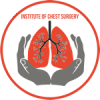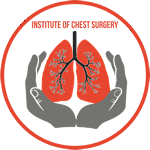Thymoma is a rare type of tumor that develops in the thymus, a small organ located behind the breastbone and in front of the heart. While thymomas are relatively uncommon, they require early detection and accurate diagnosis for prompt and effective treatment. In this article, we will delve into the various methods and procedures used in diagnosing thymoma, focusing on the keyword “thymoma diagnose.”
1. Clinical Evaluation and Medical History
The journey to diagnosing thymoma often begins with a thorough clinical evaluation and review of the patient’s medical history. The physician will inquire about any symptoms the patient may be experiencing, such as chest pain, coughing, difficulty breathing, and unexplained weight loss. They will also inquire about the patient’s overall health and any pre-existing medical conditions.
2. Physical Examination
A physical examination is conducted to assess the patient’s general health and identify any visible or palpable abnormalities. The physician will check for swelling or tenderness in the chest area and examine the patient’s neck, throat, and lymph nodes for any signs of enlargement or irregularities.
3. Imaging Studies
Imaging plays a critical role in the diagnosis of thymoma. Various imaging modalities can provide valuable insights into the size, location, and characteristics of the tumor. The most commonly used imaging techniques include:
- Chest X-ray: A chest X-ray may reveal the presence of a mass or abnormality in the thymus region. However, it cannot definitively confirm thymoma and is often followed up with more detailed imaging.
- Computed Tomography (CT) Scan: CT scans produce detailed cross-sectional images of the chest, providing a clearer view of the thymus and surrounding structures. A contrast dye may be used to enhance visibility and improve accuracy.
- Magnetic Resonance Imaging (MRI): MRI scans use powerful magnets and radio waves to generate detailed images. MRI is particularly useful in assessing the extent of tumor invasion into nearby tissues and organs.
- Positron Emission Tomography (PET) Scan: PET scans involve the injection of a radioactive tracer that highlights areas of high metabolic activity, such as cancerous cells. It helps determine whether the tumor has spread to other parts of the body.
4. Biopsy
A definitive diagnosis of thymoma requires a biopsy, where a sample of the tumor tissue is extracted and examined under a microscope. There are different biopsy methods used in thymoma diagnosis:
- Needle Biopsy: In some cases, a fine needle is inserted into the tumor under the guidance of imaging techniques to obtain a tissue sample for analysis.
- Surgical Biopsy: If the tumor is large or if needle biopsy results are inconclusive, a surgical biopsy may be performed. During this procedure, a portion or the entire tumor is removed for examination.
It is crucial to entrust the biopsy procedure to an experienced medical team, like the one led by Dr. Mohan Venkatesh Pulle, to ensure accurate diagnosis and minimize risks.
5. Histological Classification
Upon obtaining the biopsy sample, a pathologist will examine the tissue under a microscope to determine the type and grade of the tumor. Thymomas are classified into different types based on their cellular characteristics, and this information is vital in planning the appropriate treatment approach.
The most common histological classification of thymomas is the World Health Organization (WHO) classification, which categorizes thymomas into types A, AB, B1, B2, and B3, with A being the least aggressive and B3 being the most aggressive.
6. Staging and Grading
Once the diagnosis of thymoma is confirmed, staging and grading play a crucial role in understanding the extent of the tumor and its aggressiveness. Staging determines the tumor’s size and spread, while grading assesses its cellular characteristics and potential for growth and spread.
The most commonly used staging system for thymoma is the Masaoka-Koga staging system, which classifies thymomas into stages I, II, III, and IV based on the tumor’s local and regional spread. Additionally, the tumor is graded based on the WHO classification.
7. Additional Tests
In some cases, further tests may be conducted to evaluate the tumor’s relation to nearby organs and blood vessels. These tests may include echocardiography, vascular studies, or bronchoscopy. Additionally, specific blood tests, such as testing for myasthenia gravis antibodies, may be ordered as thymoma is sometimes associated with this autoimmune condition.
Conclusion
Diagnosing thymoma is a multifaceted process that involves a combination of clinical evaluation, imaging studies, biopsy, and histological examination. Early detection and accurate diagnosis are crucial for determining the most appropriate treatment plan and improving patient outcomes.
If you or someone you know is experiencing symptoms or has been diagnosed with thymoma, seeking the expertise of a skilled medical professional like Dr. Mohan Venkatesh Pulle can make all the difference in ensuring proper management and care.
Remember, the information provided here is for informational purposes only and should not replace professional medical advice. Always consult with a qualified healthcare provider for accurate diagnosis and personalized treatment options tailored to individual needs.







